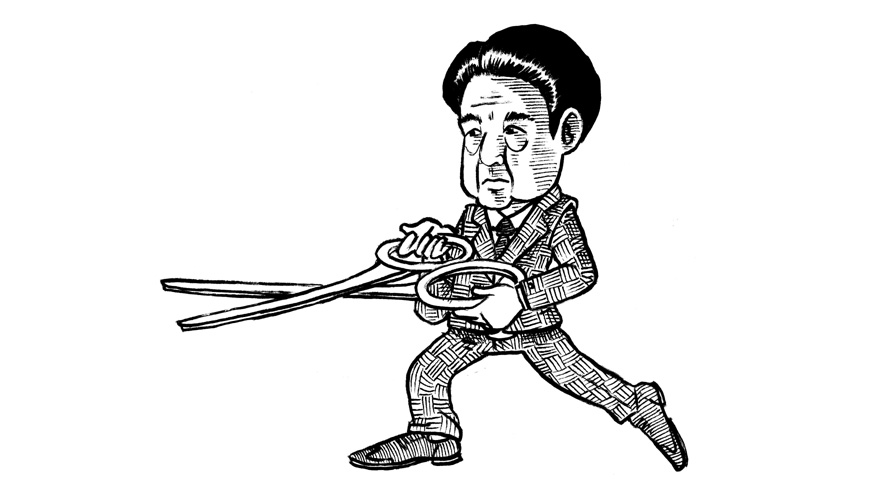Prime Minister Shinzo Abe is pushing for constitutional change. Yet he is playing the political huckster by proposing to first only fiddle with the amendment procedure in Article 96, lowering the threshold for the process to move forward from the approval of two-thirds of both houses of the Diet, as it currently stands, to a bare majority of the two chambers. In either case a national referendum would be required for the amendment to take effect.
Since Abe's Liberal Democratic Party has enjoyed majority control of both Diet chambers for much of the past six decades, and bearing in mind that the referendum is unlikely to present a significant hurdle (for reasons discussed in last week's column, "Tweak the Constitution now, think later?"), it is worth looking at the comprehensive amendment proposal the party published in April of last year, when they were still in opposition. The obvious conclusion is that Abe and his cohorts envision a two-stage process whereby after Article 96 is amended they can cram through some or all of the more controversial aspects of their constitutional agenda free from any bothersome super-majority requirement.
Since everyone is going to be talking about the Constitution ahead of and beyond the July 21 House of Councilors election (which could result in the LDP and other "reformers" commanding a majority in both houses), this would seem an opportune time to reproduce the charter in its entirety, together with some notes on where and what the LDP hopes to change. Their proposed amendments can be roughly broken up into three categories: 1) technical changes such as adding paragraph numbers and headers, and minor language tweaks; 2) substantive changes that make the Constitution reflect what is already happening anyway; and 3) substantive changes that suggest a new direction or at least elicit a "WTF?!" response. In some cases there may be a certain amount of overlap between categories, depending upon what you read into the intent behind some of the tweaks.



